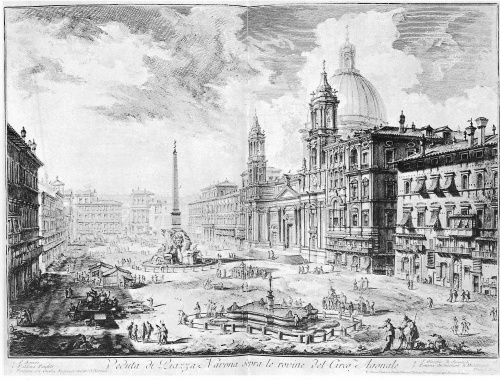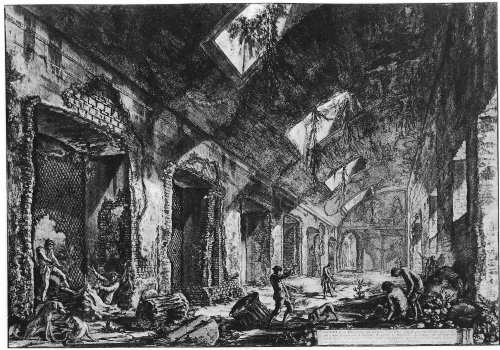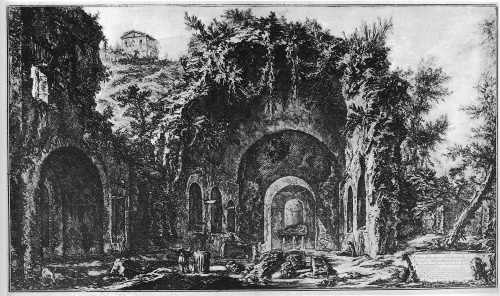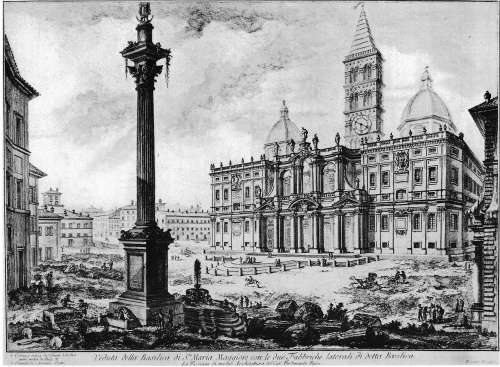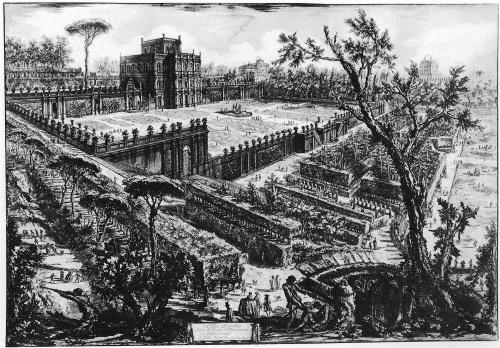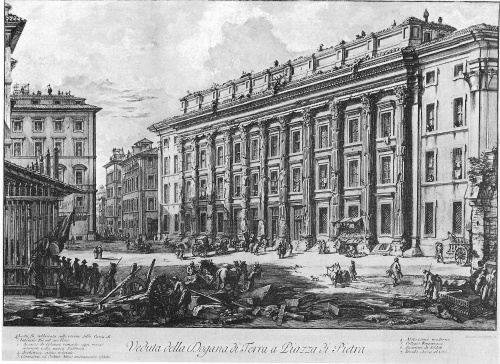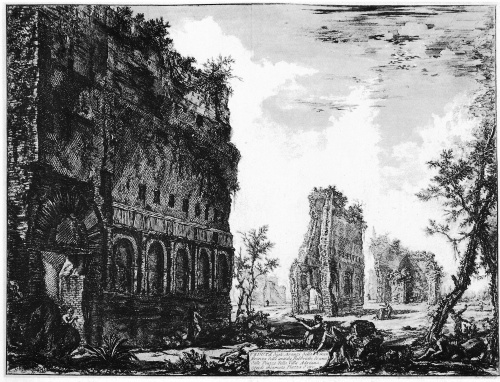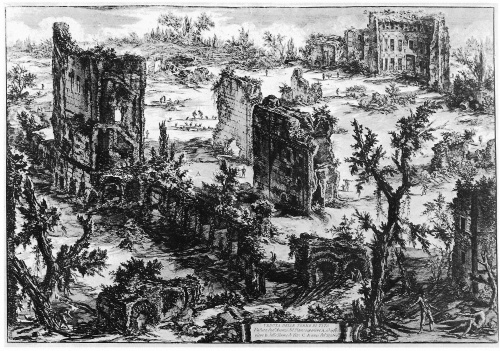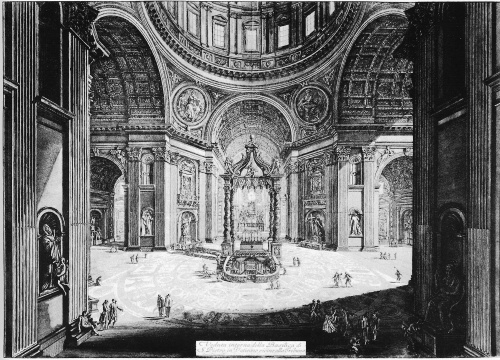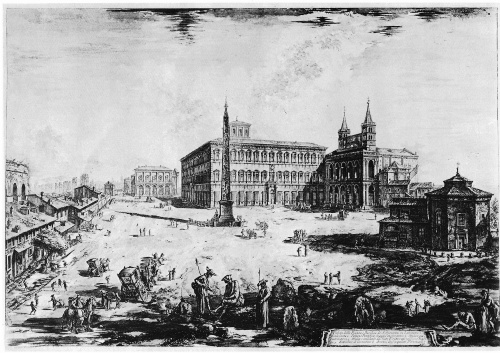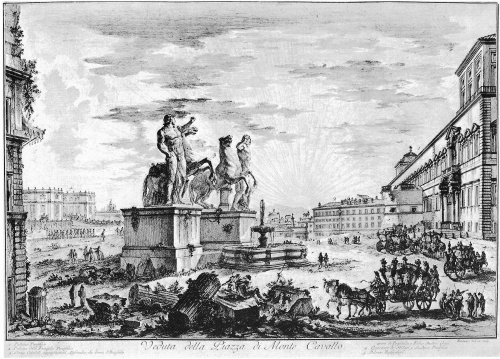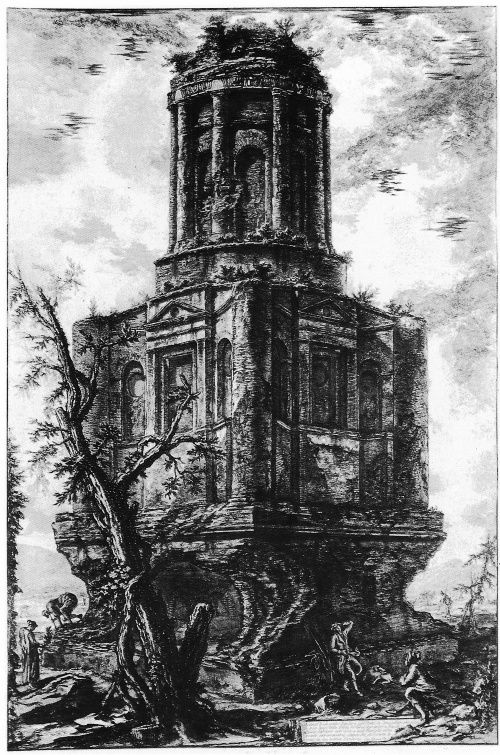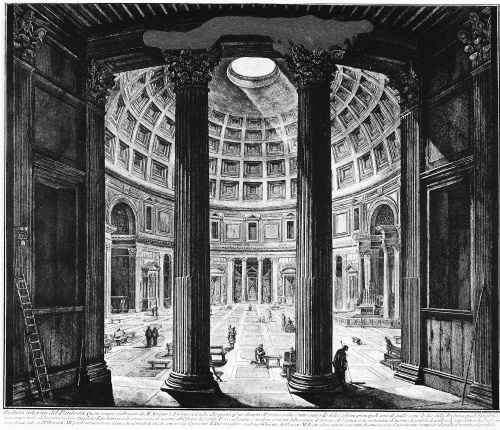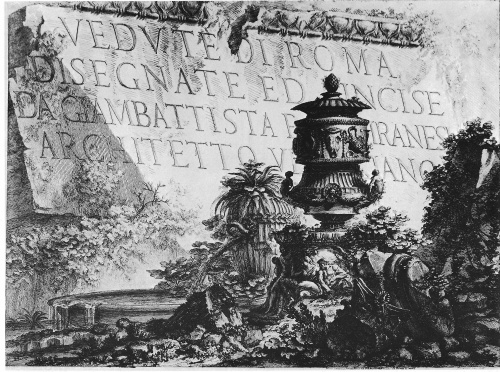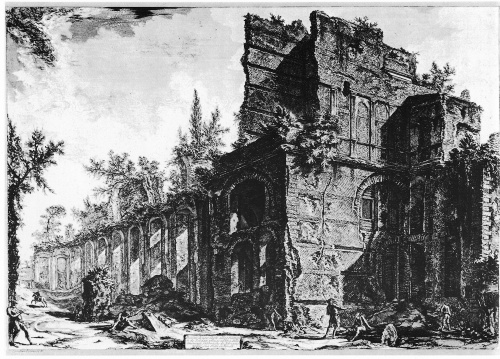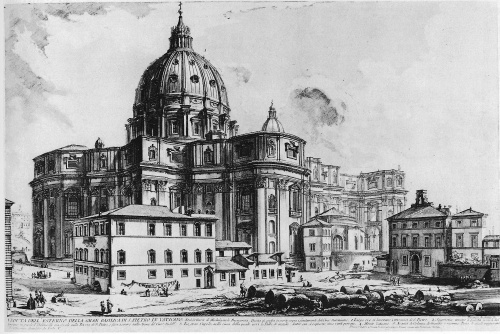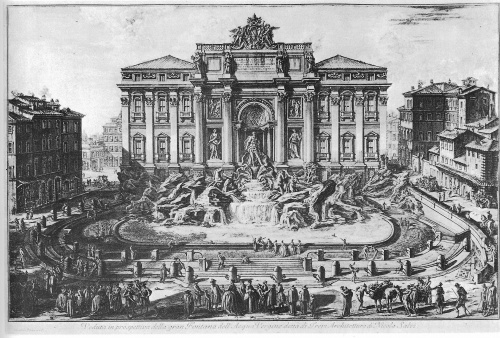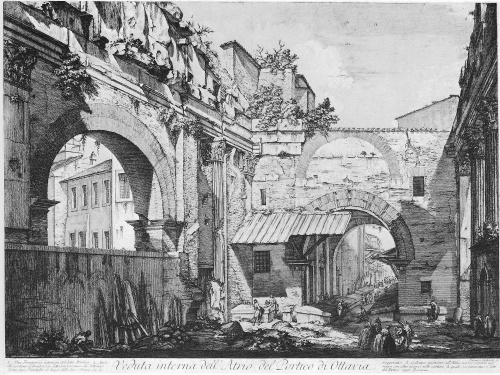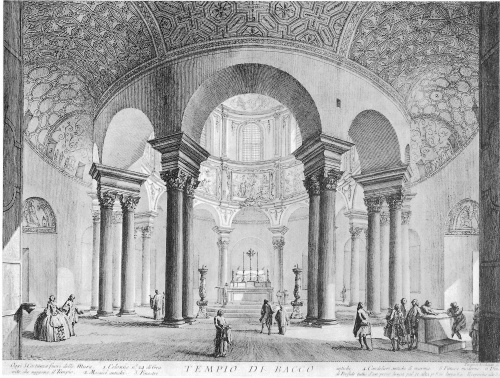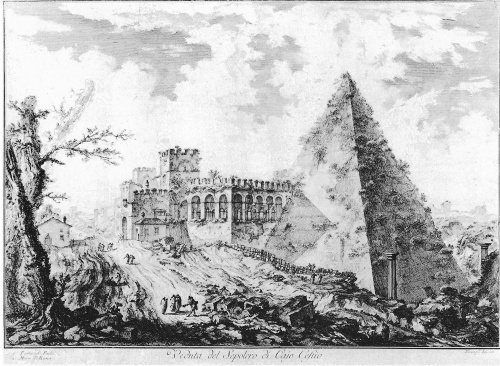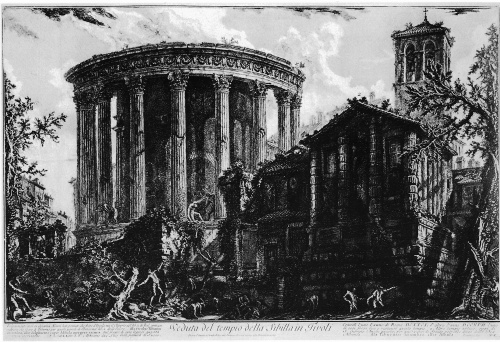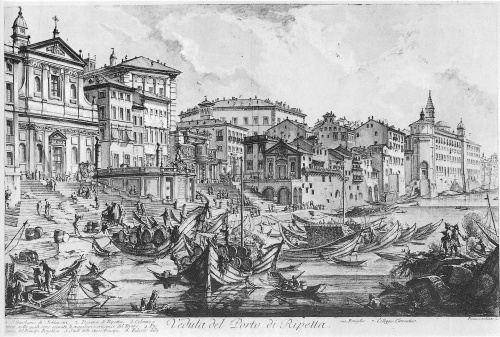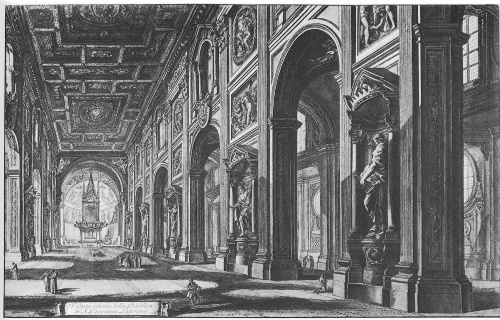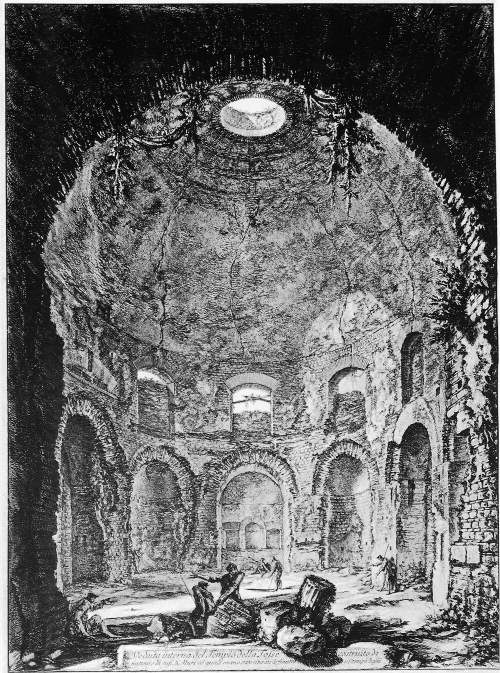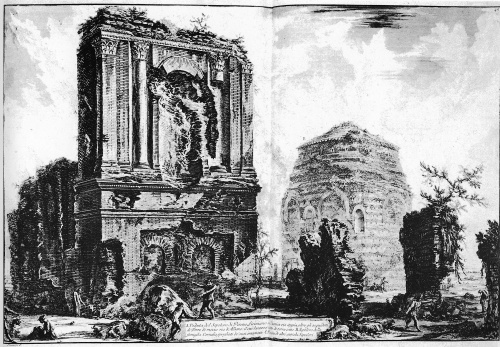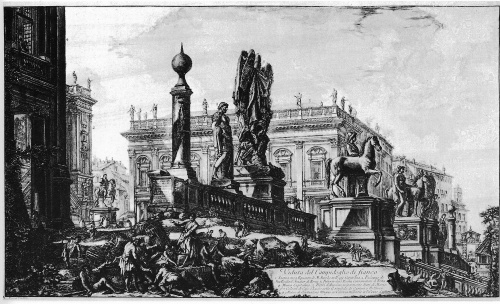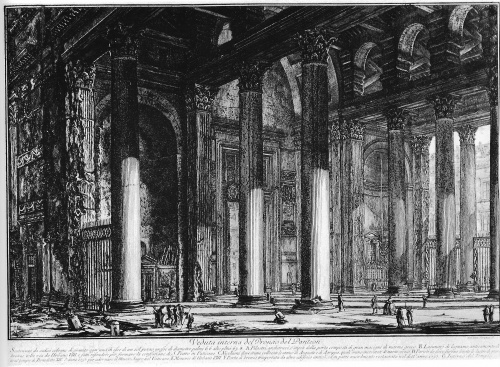Engravings by Giovanni Battista Piranesi (1720-1778) (136 works)
Разрешение картинок от 599x843px до 3912x3077px
Giovanni Battista Piranesi (Italian: Giovanni Battista Piranesi, or Giambattista Piranesi; 1720-1778) - Italian archaeologist, architect and graphic artist, engraver, draftsman, master of architectural landscapes. He had a strong influence on subsequent generations of artists of the romantic style and - later - on surrealists.
Gianbattista Piranesi was born on October 4, 1720 in Mogliano Veneto (near the city of Treviso), in the family of a stonemason. The real surname of the family Piranese (from the name of the town "Pirano d'Istria", from where the stone for buildings was supplied) acquired the sound "Piranesi" in Rome .
His father was a stone carver, and in his youth Piranesi worked in his father's workshop "L'Orbo Celega" on the Grand Canal, which carried out orders from the architect D. Rossi. He studied architecture from his uncle, the architect and engineer Matteo Lucchesi, as well as from the architect G. A. Scalfarotto.Studied the techniques of perspective painters, took lessons in engraving and perspective painting from Carlo Zucchi, a famous engraver, author of a treatise on optics and perspective (brother of the painter Antonio Zucchi); He independently studied treatises on architecture, read the works of ancient authors (his mother’s brother, the abbot, got him into reading). The young Piranesi’s interests also included history and archeology.
As an artist, he was significantly influenced by the art of the vedatistas, which was very popular in the mid-18th century in Venice.
In 1740 he left Veneto forever and from that time lived and worked in Rome. Piranesi came to the Eternal City as an engraver and graphic designer as part of the embassy delegation of Venice. He was supported by Ambassador Marco Foscarini himself, Senator Abbondio Rezzonico, nephew of the “Venetian Pope” Clement XIII Rezzonico - Prior of the Order of Malta, as well as the “Venetian Pope” himself ; Lord Carlemont became the most ardent admirer of Piranesi’s talent and a collector of his works. Piranesi independently improved in drawing and engraving, worked in the Palazzo di Venezia, the residence of the Venetian ambassador in Rome; studied the engravings of J. Vazi. In the workshop of Giuseppe Vasi, the young Piranesi studied the art of metal engraving. From 1743 to 1747 he lived mostly in Venice, where, among other things, he worked with Giovanni Battista Tiepolo.
Piranesi was a highly educated man, but unlike Palladio, he did not write treatises on architecture. A certain role in the formation of Piranesi’s style was played by Jean Laurent Le Gue (1710-1786), a famous French draftsman and architect who worked in Rome from 1742, close to the circle of students of the French Academy in Rome, with whom Piranesi himself was friendly.
In Rome, Piranesi became a passionate collector: his workshop in Palazzo Tomati on Strada Felice, full of antique marbles, was described by many travelers. He was fond of archeology, participated in the measurements of ancient monuments, sketched found works of sculpture and decorative art. He loved to make their reconstruction, like the famous Warwick Crater he compiled (now in the collection of the Burrell Museum, near Glasgow), which he acquired in the form of separate fragments from the Scottish painter G. Hamilton, who was also fond of excavations.
The first known works - a series of engravings "Prima Parte di architettura e Prospettive" (1743) and "Varie Vedute di Roma" (1741) - bore the imprint of the style of engravings by J. Vazi with strong effects of light and shadow, highlighting the dominant architectural monument and at the same time techniques of master stage designers of Veneto, who used “angular perspective”. In the spirit of the Venetian capricci, Piranesi combined in engravings real-life monuments and his imaginary reconstructions (frontispiece from the Vedute di Roma series - Fantasy of ruins with a statue of Minerva in the center; title of the publication of the Carceri series; View of the Pantheon Agrippa, Interior of the Villa Maecenas, Ruins of the sculpture gallery at Hadrian's Villa in Tivoli - series "Vedute di Roma").
In 1743, Piranesi published his first series of engravings in Rome. The collection of large engravings by Piranesi “Grotesques” (1745) and the series of sixteen sheets “Fantasies on Prison Themes” (1745; 1761) enjoyed great success. The word “fantasy” is not accidental here: in these works Piranesi paid tribute to the so-called paper, or imaginary ,architecture. In his engravings he imagined and showed fantastic architectural structures that were impossible for real implementation.
In 1744, due to a difficult financial situation, he was forced to return to Venice. He improved in engraving techniques, studying the works of G.B. Tiepolo, Canaletto, M. Ricci, the style of which influenced his subsequent publications in Rome - “Vedute di Roma” (1746 -1748), "Grotteschi" (1747-1749), "Carceri" (1749-1750). The famous engraver J. Wagner invited Piranesi to be his agent in Rome, and he again went to the Eternal City.
In 1756, after a long study of the monuments of Ancient Rome and participation in excavations, he published the fundamental work “Le Antichita romane” (in 4 volumes) with the financial support of Lord Carlemont. It emphasized the greatness and significance of the role of Roman architecture for ancient and subsequent European culture. This a series of engravings was devoted to the same theme - the pathos of Roman architecture
legal "Della magnificenza ed architettura dei romani" (1761) with a dedication to Pope Clement XIII Rezzonico. Piranesi emphasized in it the contribution of the Etruscans to the creation of ancient Roman architecture, their engineering talent, sense of structure of monuments, functionality. This position of Piranesi irritated supporters of the greatest contribution Greeks into ancient culture, based on the works of French authors Le Roy, Cordemoy, Abbot of Laugier, Comte de Queylus. The main exponent of the pan-Greek theory was the famous French collector P. J. Mariette, who spoke in the Gazette Litterere del'Europe with objections to Piranesi's views. In the literary work "Parere su l'architettura" (1765), Piranesi responded to him, explaining his position. The heroes of the artist’s work, Protopiro and Didascallo, are arguing like Marietta and Piranesi. In Didascallo’s mouth, Piranesi put an important idea that in architecture everything should not be reduced to dry functionality. “Everything should be in accordance with reason and truth, but this threatens to reduce everything to huts ", wrote Piranesi. The hut was an example of functionality in the works of Carlo Lodoli, the enlightened Venetian abbot, whose works Piranesi studied. The dialogue of Piranesi's characters reflected the state of architectural theory in the 2nd half. XVIII century Preference should be given to variety and imagination, Piranesi believed. These are the most important principles of architecture, which is based on the proportionality of the whole and its parts, and its task is to meet the modern needs of people.
In 1757 the architect became a member of the Royal Society of Antiquaries in London. In 1761, for his work “Magnificenza ed architettura dei romani”, Piranesi was accepted as a member of the Academy of St. Luke; in 1767 he received the title "cavagliere" from Pope Clement XIII Rezzonico.
Piranesi expressed the idea that without diversity architecture would be reduced to a craft in his subsequent works - the decor of the English Cafe (1760s) in Piazza di Spagna in Rome, where he introduced elements of Egyptian art, and in the series of engravings "Diverse maniere d'adornare I cammini" (1768, also known as Vasi, candelabri, cippi...). The latter was carried out with the financial support of Senator A. Rezzonico. In the preface to this series, Piranesi wrote that the Egyptians, Greeks, Etruscans, Romans - all made a significant contribution to world culture, enriched architecture with their discoveries. Projects for decorating fireplaces, lamps, furniture , watches became the arsenal from which Empire architects borrowed decorative elements for interior decoration.
In 1763, Pope Clement III commissioned Piranesi to build the choir in the church of San Giovanni in Laterano. Piranesi's main work in the field of real, “stone” architecture was the reconstruction of the church of Santa Maria Aventina (1764-1765).
In the 1770s, Piranesi also carried out measurements of the temples of Paestum and made corresponding sketches and engravings, which after the artist's death were published by his son Francesco.
G.B. Piranesi had his own vision of the role of an architectural monument. As a master of the Age of Enlightenment, he thought of it in a historical context, dynamically, in the spirit of the Venetian capriccio, he loved to combine various time layers of the life of the architecture of the Eternal City. The idea that a new style is born from architectural styles of the past, the importance of diversity and imagination in architecture, that the architectural heritage receives a new appreciation over time, Piranesi expressed by building the church of Santa Maria del Priorato (1764-1766) in Rome on the Aventine Hill. It was erected by order of the Prior of Malta Order of Senator A. Rezzonico and became one of the major monuments of Rome during the time of neoclassicism. The picturesque architecture of Palladio, the baroque scenography of Borromini, the lessons of Venetian perspectivists - everything came together in this talented creation of Piranesi, which became a kind of “encyclopedia” of elements of ancient decor. The facade facing the square, consisting from an arsenal of antique details, reproduced as in engravings, in a strict frame; the decoration of the altar, also oversaturated with them, looks like collages made up of “quotations” taken from ancient decor (bucranias, torches, trophies, mascarons, etc.). The artistic heritage of the past for the first time appeared so clearly in the historical assessment of the architect of the Age of Enlightenment, freely and clearly and with a touch of didactics teaching it to his contemporaries.
Drawings by G.B. Piranesi are not as numerous as his engravings. The largest collection of them is in the J. Soane Museum in London. Piranesi worked in various techniques - sanguine, Italian pencil, combined drawings with Italian pencil and pen, ink, adding washes with a bistre brush. He sketched ancient monuments, details of their decor, united them in the spirit of the Venetian capriccio, and depicted scenes from modern life. His drawings showed the influence of Venetian masters-perspectivists, the style of G.B. Tiepolo. In the drawings of the Venetian period, pictorial effects dominate; in Rome, it became more important for him to convey the clear structure of the monument, the harmony of its forms. The drawings of Hadrian’s Villa in Tivoli were executed with great inspiration, which he called "a place for the soul", sketches of Pompeii made in late years
s creativity. Modern reality and the life of ancient monuments are combined in the sheets into a single poetic story about the eternal movement of history, about the connection between the past and the present.
The words of G.B. Piranesi: “the Parere su l’ Architettura” (“They despise my novelty, I despise their timidity”) could become the motto of the work of this outstanding master of the Age of Enlightenment in Italy. His art had a significant influence on many architects (F. Gilly, R. and J. Adam, J. A. Selva, C. Percier and P. Fontaine, C. Clerisseau, etc.). Decorative elements from his work “Diverse maniere” "... reproduced in their publications by T. Hope (1807), Percier and Fontaine (1812) and many others. He had no students in engraving except his son Francesco (1758-1810), who published the series "Raccolta de Tempi antichi" (1786 or 1788 ) and the father’s last work, “Differentes vues de la quelques restes”... with views of the temples of Paestum, which Francesco visited with him in 1777 and 1778. His daughter Laura also helped his father in his work, making drawings.
The artist died on November 9, 1778 in Rome after a long illness. He was buried in the church of Santa Maria del Priorato.
